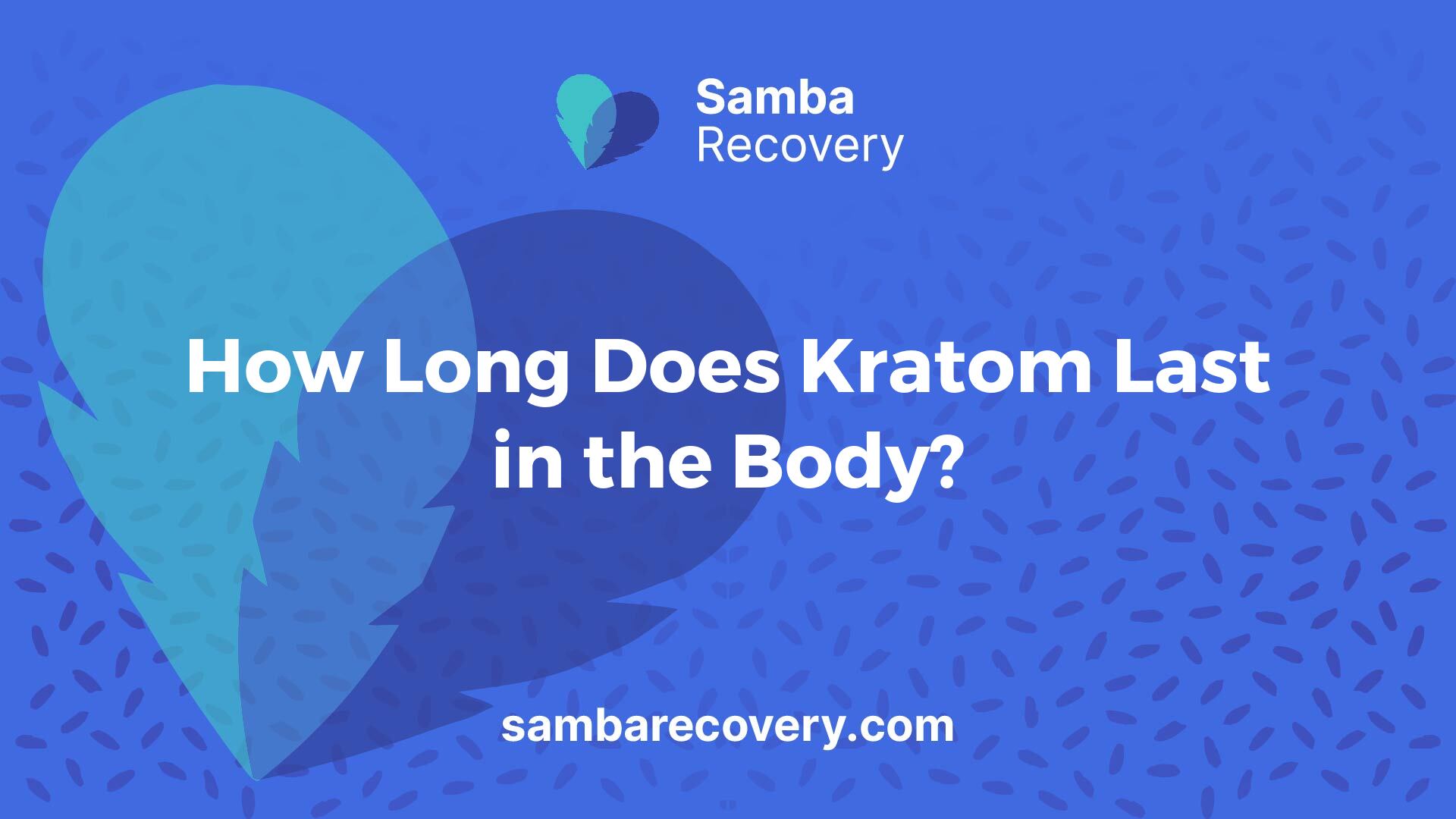Understanding Kratom Effects
When exploring kratom use, it is essential to gauge how long its effects last and what factors influence this duration. Understanding these aspects helps individuals make informed decisions regarding their consumption.

Onset and Duration of Effects
Kratom effects typically begin within 10 to 30 minutes after ingestion. Some individuals may start to feel effects as quickly as 5 minutes, while others may take up to 30 minutes for onset [1].
The duration of these effects varies significantly based on dosage. At low to moderate doses, kratom’s effects generally last around two hours. In contrast, higher doses can extend the effects up to five hours. For a clearer understanding of how these timeframes can vary based on dosage, refer to the following table:
Dosage LevelOnset TimeDurationLow to Moderate Dose10 to 30 minutesApproximately 2 hoursHigh Dose10 to 30 minutesUp to 5 hours
Factors Influencing Effects
The effects of kratom can be influenced by various personal factors. These include an individual’s body chemistry, metabolism, and tolerance level. Additionally, the kratom strain and its potency play a crucial role in determining how effects will manifest.
It’s also important to note that heavy kratom use can lead to more prolonged effects, lasting up to several hours [2]. Dependency can develop in over 50% of individuals who use kratom regularly for at least six months, which may result in withdrawal symptoms similar to opiate withdrawal if usage is suddenly stopped.
Understanding these factors can help individuals better manage their kratom consumption and its effects. For additional information on managing dependency and the long-term effects of kratom, consider reading more about how to cope with having narcissistic parents or can your heart heal after addiction?.
Managing Kratom Consumption
Understanding how to manage kratom consumption is essential for those considering its use. This section provides guidance on dosage guidelines and the potential effects on the body.
Dosage Guidelines
When consuming kratom, dosing is a critical factor that influences its effects. At low to moderate doses, the effects of kratom typically last around two hours. The duration can extend up to five hours for higher doses. However, individual responses can vary significantly based on the strain, potency, and personal body chemistry.
Dosage RangeEffects DurationLow to Moderate (1-5 grams)2-4 hoursHigh (5+ grams)5 hours
Regular use of kratom can lead to the development of tolerance, which means a person may need to increase their dosage to achieve the same effects. This increase can be risky and lead to potential addiction or dependence. It’s crucial for users to start with smaller doses and assess tolerance before considering larger amounts. For more detailed insights on kratom’s effects, refer to our article about how long does kratom last?.
Effects on the Body
Kratom affects individuals differently. The interaction of kratom with the body can lead to both positive and negative outcomes:
The body’s metabolism plays a significant role in how long kratom stays active. It typically has a half-life of around 3 to 8 hours, and the substance may stay in the body for 1–2 days, with traces detectable for up to 8 days post-ingestion [2]. For those concerned about potential risks associated with kratom use, it is advisable to learn about the long-term effects of kratom use and consult healthcare professionals to ensure safe consumption practices.
Kratom Half-Life and Metabolism
Understanding how long kratom lasts in the body involves learning about its half-life and how the body processes this substance. The half-life of kratom is crucial in determining its duration of effects and elimination from the system.
Understanding Half-Life
The half-life of kratom is defined as the time it takes for the body to eliminate half of the consumed amount. For kratom, this half-life typically ranges from 3 to 8 hours. Various factors can influence this timeframe, including metabolism, age, weight, liver function, and overall health.
Kratom’s half-life can be affected by the dosage taken. While the half-life remains relatively consistent for low and high doses, higher doses may require more energy for breakdown, resulting in an extended presence in the system. Overall, kratom generally remains detectable in the body for 1 to 2 days, but in some cases, traces may remain detectable for up to 8 days after ingestion.
Time FrameHalf-Life DurationMinimum3 hoursMaximum8 hoursAverage Detection1 – 2 daysPossible Extended DetectionUp to 8 days
Body’s Processing of Kratom
Kratom is metabolized primarily in the liver, where mitragynine, a prevalent active compound, undergoes breakdown. When consumed, mitragynine has an estimated half-life of 3 hours when ingested orally.
A significant metabolite, 7-OH-mitragynine, is produced during the metabolism of mitragynine and is believed to be more metabolically active, contributing to the effects experienced from kratom use [3].
Due to its complex metabolism, detecting kratom can be challenging as it typically does not show up on routine drug tests. This poses difficulties when evaluating suspected kratom ingestion, as the detection timeline varies based on individual metabolic rates and other personal health factors.
Understanding these pharmacokinetic properties helps in managing kratom consumption and recognizing its effects and duration in the body. For individuals seeking to comprehend their usage, it is crucial to consider these metabolic factors and their relation to potential addiction and dependency risks.
Long-Term Effects of Kratom Use
Understanding the long-term impacts of kratom consumption is crucial for those considering its use. Regular and heavy use can lead to serious consequences, including dependency and unusual side effects.
Dependency and Addiction Risks
Over 50% of individuals who engaged in regular kratom use for a minimum of six months have reported developing a dependency on the substance. This dependency may manifest as physical withdrawal symptoms that resemble those experienced during opiate withdrawal if kratom use is abruptly discontinued.
The risk of developing an addiction to kratom can vary based on the strain used, dosage, and frequency of consumption. Specifically, red kratom strains are more commonly linked to dependency as they possess opioid-like effects. However, dependence can arise with any kratom strain if consumed regularly in high doses [4]. The relationship between kratom use and dependence underscores the importance of cautious consumption practices.
Dependency FactorsDescriptionFrequency of UseRegular, high-dose usage increases dependency risk.Strain TypeRed kratom is particularly associated with higher addiction potential.Individual HealthPersonal health conditions may influence likelihood of developing a dependency.
Unusual Side Effects
In addition to dependency risks, long-term use of kratom can result in several unusual side effects. These effects may include:
Furthermore, long-term users may also develop a tolerance, necessitating increasingly larger doses to achieve the desired effects [2].
The information about kratom’s long-term effects highlights the importance of moderation and awareness for those considering its use. It is essential for individuals to remain informed of the potential risks associated with ongoing consumption, as dependency and unusual side effects can severely impact health and well-being.
Detection of Kratom in the Body
Understanding how long kratom lasts in the body is important for those considering its use or managing its effects. Various methods can detect kratom in the body, and the duration of detection can vary based on several factors.
Testing Methods
Kratom can be detected using several testing methods, each with different detection windows. Here’s a brief overview of the primary testing methods:
Testing MethodDetection WindowUrine TestUp to 7 daysBlood Test2 – 3 daysHair TestUp to 3 monthsSaliva Test1 – 3 days
Detection methods such as urine, blood, hair, and saliva tests can reveal the presence of kratom in the body. Hair testing is often considered the most accurate method for detecting kratom, as it can signify use over a longer period. In contrast, urine tests typically provide a shorter detection window, usually identifying kratom for about a week after ingestion [2].
Duration of Detection
The half-life of kratom ranges between 3 to 8 hours; however, it is commonly accepted that kratom remains in the body for 1 to 2 days under regular use. In some cases, traces of kratom may be detectable for up to 8 days after use [2].
SubstanceHalf-LifeGeneral Detection WindowKratom3 – 8 hours1 – 2 days, up to 8 daysMitragynine (active compound)3 hours2 days after use
Mitragynine, a major active compound in kratom, has a half-life of approximately 3 hours when ingested orally. It is known for its linear pharmacokinetics and the ability to be eliminated biphasically, complicating the evaluation and testing of kratom. Regular users of kratom may have it detected in their system longer, especially if consumed in high doses, while lighter users may see shorter detection times.
The understanding of detection methods and durations is essential for those questioning how long does kratom last? in their system, particularly in relation to potential testing scenarios.
Varieties of Kratom and Their Effects
Different strains of kratom are believed to offer varying effects that cater to the needs of users. Among the most popular varieties are red, green, and white strains, each offering its own unique benefits.
Red, Green, and White Strains
Red Kratom is known for its potency and fast-acting nature. Users often choose red kratom for relief from migraines, arthritis, and other chronic pain conditions. Due to its strong sedative effect, many individuals take red kratom before bed to help with relaxation and anxiety reduction [4].
Green Kratom offers a balanced blend of energizing and relaxing effects. It is sometimes referred to as a middle-of-the-road option that provides moderate stimulation without leading to excessive sedation. This strain is popular in forms such as Green Bali and Green Maeng Da, which are usually consumed as tea [4].
White Kratom is generally associated with stimulating effects and heightened awareness. Users report feeling more energized and focused after consuming white strains. However, it’s important to consider that different individuals may respond differently to each strain based on personal tolerance and expectation.
Kratom StrainPrimary EffectsCommon UsesRedSedation, Pain ReliefMigraines, Chronic PainGreenBalanced Energizing & RelaxingGeneral Wellness, EnergyWhiteStimulation, Increased FocusEnhanced Productivity
Despite marketing claims of distinct effects induced by each strain, research suggests no significant differences in alkaloid content across red, green, and white strains. The reported variations in effects could stem from marketing narratives and anecdotal reports [5].
Dose-Dependent Effects
Many of the effects experienced from kratom use are dose-dependent. Lower to moderate doses (1-5 g) are generally associated with stimulating effects, helping users feel more alert and focused. In contrast, moderate to high doses tend to induce analgesia and sedation.
Understanding these nuances regarding dosage can assist individuals in making more informed decisions about their kratom consumption. It’s essential to recognize that individual experiences may vary, and what works effectively for one person may not produce the same results for another.
Dose RangeEffectsRecommended Use1 – 5 gStimulation, Increased AwarenessTask Completion, Physical Activity5 – 15 gAnalgesia, SedationPain Relief, Relaxation
Benefits and experiences can vary across populations and should always be approached with caution, particularly when considering the potential for dependency and addiction.
References
[2]:
[3]:
[4]:
[5]:






